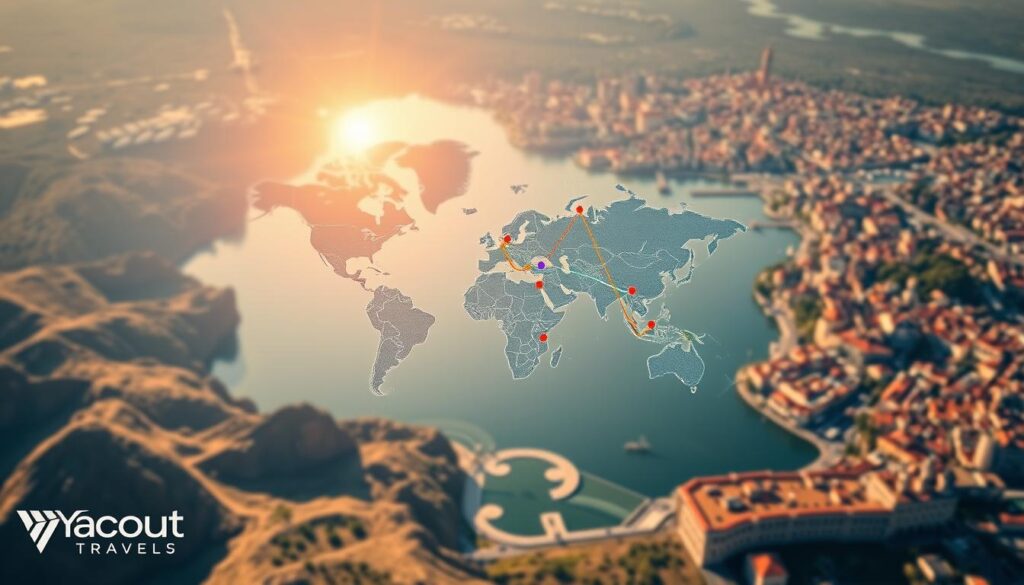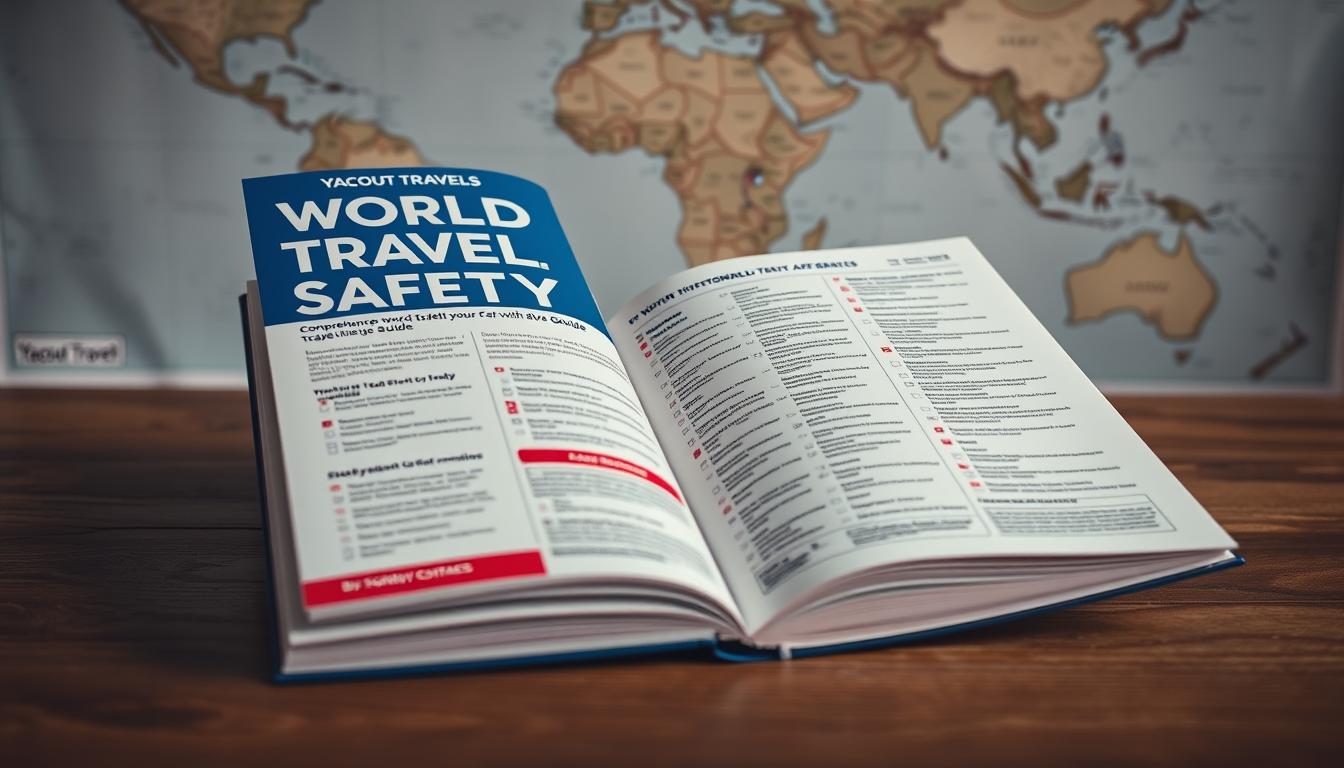Discover Dangerous Countries for Safe Travel
Did you know millions of people explore every corner of the globe each year? International journeys offer incredible experiences. Yet, being aware of potential hazards is a key part of smart planning.
This guide examines various nations with higher risk levels. We provide context about what creates challenges in different parts of the world. Our goal is to help you distinguish real concerns from exaggerated fears.
Understanding that “dangerous” is a relative term is crucial. Factors like local crime, political stability, and health systems all play a role. We will explore these elements in detail.
You will find regional breakdowns and practical tips for your journey. This knowledge empowers you to make informed choices and prepare effectively. The aim is to ensure your adventures are both enriching and secure.
Introduction: What Makes a Country Dangerous for Travelers
Professional security organizations use sophisticated methods to evaluate destinations based on multiple safety factors. They don’t rely on simple labels but analyze complex data.
Defining Risk and Safety in Travel
Risk combines two important elements: how likely problems are to occur and how severe they could be. This approach gives a complete picture of potential challenges.
Safety exists on a spectrum rather than as a simple yes-or-no question. Locations range from highly stable to extremely risky. Understanding this helps with better planning.
Factors that Influence Dangerous Countries
Experts examine several key indicators when assessing a nation’s security profile. These include crime statistics, healthcare quality, and infrastructure reliability.
They also consider political stability and natural disaster frequency. These factors often interact, creating compounded challenges in certain regions.
Risk classification systems help categorize destinations into five levels. These range from low to extreme risk. This framework assists in making informed decisions about international journeys.
Assessing Global Safety and Travel Risks
Understanding global risks requires a close look at specific, measurable factors that define a location’s challenges. These elements combine to create a comprehensive security picture.
Crime, Violence, and Political Instability
High rates of crime and violence are primary concerns. These often include armed robbery and gang-related activity.
Political instability can create unpredictable environments. Weak government institutions may struggle to maintain order, leading to civil unrest. This unrest can erupt suddenly, affecting entire regions.
Ongoing conflict represents the most severe security threat. In these areas, violence is widespread and essential services may collapse.
Health, Natural Disasters, and Infrastructure Challenges
Health risks involve poor medical systems and infectious diseases. Limited access to clean water compounds these problems.
Areas prone to natural disasters like earthquakes or floods face added dangers. A weak infrastructure hampers emergency response and evacuation efforts.
When multiple risk factors overlap, the overall danger increases significantly. The table below summarizes how these elements interact across different risk levels.
| Risk Level | Security & Political Climate | Health & Environment | Infrastructure Status |
|---|---|---|---|
| Low Risk | Strong rule of law, stable government | Robust health systems, minimal disaster impact | Reliable utilities and transportation |
| Medium Risk | Political tension, sporadic unrest | Adequate but strained health services | Functional but inconsistent infrastructure |
| High Risk | Ongoing conflict, weak institutions | Poor healthcare, frequent disasters | Fragile systems, difficult evacuation |
Dangerous Countries Safe Travel: Top Global Risk Areas
Security experts categorize global threats by dividing the world into five major geographic regions for clearer analysis. These areas—the Americas, Europe, Middle East and North Africa, Sub-Saharan Africa, and Asia-Pacific—each face distinct security challenges.
Shared threats often cross national borders within these regions. Understanding these patterns helps identify potential hazards more effectively.
Americas and Its High-Risk Destinations
The Americas face significant security issues primarily driven by organized crime. Drug trafficking networks and powerful cartels create instability across many nations.
Countries like Haiti experience extreme gang violence and state collapse. Mexico deals with cartel conflicts affecting tourist zones. Venezuela suffers from economic crisis and violent crime.
Middle East, Africa, and Asia-Pacific Hotspots
The Middle East and North Africa region remains highly volatile due to ongoing conflicts. Sectarian tensions and geopolitical disputes create persistent instability.
Sub-Saharan Africa faces challenges from weak institutions and insurgent groups. Asia-Pacific deals with diverse threats including political unrest and natural disasters.
Risk levels vary dramatically within each region. Thorough research on specific destinations is essential for informed planning.
Regional Breakdown: The Americas and Europe
Regional analysis helps travelers comprehend the varying risk levels across different geographic zones. The Americas and Europe present contrasting security profiles that require careful evaluation.
Insights into North, Central, and South America
Organized crime and drug trafficking create significant challenges throughout the Americas. Violence levels range from moderate to extreme across different countries.
Haiti represents an extreme case of state collapse. Gangs control vast territories, including parts of the capital. Police have lost control despite international intervention efforts.
Mexico’s security situation involves complex cartel conflicts. Major groups battle for control, affecting previously secure tourist areas. Millions still visit safely by staying in protected resort zones.

Venezuela faces multifaceted dangers including economic crisis and rampant crime. Express kidnappings and robberies target visitors. Political instability creates additional risks for international travelers.
Europe’s Changing Security Landscape
Most European countries maintain strong institutions and effective law enforcement. The continent generally offers low to moderate risk levels for visitors.
The Russo-Ukrainian conflict has dramatically altered eastern Europe’s security profile. Ukraine faces regular missile threats with essential services disrupted.
Russia presents unique risks through arbitrary detention practices. The government targets foreign nationals, particularly from NATO countries. This political instability makes travel inadvisable despite cultural attractions.
Even in conflict zones, risks are often localized rather than widespread. However, unpredictable attacks mean no area can be considered completely secure.
Unpacking Middle East, Africa, and Asia-Pacific Risks
The eastern hemisphere contains numerous areas where multiple risk factors converge to create challenging environments. These regions face complex security situations that combine political, social, and environmental challenges.
MENA Region: Conflict and Extremism
Several nations in the Middle East and North Africa experience ongoing armed conflict and political instability. Sudan’s civil war has created massive displacement and humanitarian needs.
Yemen faces complete state failure with widespread food insecurity. Lebanon experiences regular airstrikes and significant displacement due to regional tensions.
Violent extremism remains a persistent threat across the region. Various armed groups continue operations that specifically target foreign interests.
Sub-Saharan Africa and APAC: Natural and Man-Made Disasters
Many African nations struggle with jihadist insurgencies and weak government control. The Central African Republic sees ongoing armed conflict between multiple factions.
Ethiopia deals with complex ethnic conflicts following recent warfare. Myanmar’s civil war has escalated since the 2021 military takeover.
Pakistan faces multiple crises including political instability and active insurgencies. Papua New Guinea experiences extreme crime rates and inadequate infrastructure.
| Region | Primary Conflict | Key Challenges | Humanitarian Impact |
|---|---|---|---|
| MENA | Civil wars, extremism | State collapse, terrorism | Mass displacement, hunger |
| Sub-Saharan Africa | Insurgencies, ethnic violence | Weak institutions, poor healthcare | Refugee crises, disease |
| Asia-Pacific | Political unrest, crime | Infrastructure breakdown | Economic instability |
Analyzing Popular Destinations and Safety Misconceptions
Many popular vacation spots carry reputations that don’t always match the reality on the ground. Perceptions of risk are often shaped by outdated information or media highlights rather than current data.

Case Studies: Colombia, Mexico, and Italy
Colombia has transformed since its peace deal, though risks like petty theft in cities and violent crime in rural areas persist. Millions visit its vibrant culture safely by staying aware.
Mexico’s cartel issues are real, but tourist resorts see millions of safe visits annually. Using trusted transport and avoiding specific states mitigates most risks for visitors.
Italy’s moderate risk rating surprises many. It accounts for seismic activity, organized crime in some regions, and high petty crime rates in tourist centers like Rome.
Debunking Common Travel Safety Myths
A major myth is that wealthier nations are automatically secure. The United States ranks lower on peace indexes than some developing countries due to internal violence.
Tourists face higher risks from pickpocketing in European capitals than from violent crime in many other parts of the world. Media often sensationalizes rare events, skewing perception.
Long-held stereotypes can persist long after a country’s conditions improve. Informed, nuanced research is the key to understanding real security levels in different places.
Practical Tips for Safe Travel Amid Global Risks
Proactive measures can significantly reduce exposure to common problems faced by international visitors. Smart planning combines practical safeguards with reliable information sources.
Smart Travel Insurance and Security Measures
Comprehensive insurance is essential when visiting any foreign country. It should cover medical emergencies, evacuation, and theft. This is especially important in places with limited healthcare services.
Research accommodations in secure neighborhoods before booking. Use registered transportation rather than unmarked vehicles. Avoid large crowds and political demonstrations.
Protective gear like RFID-blocking wallets and anti-theft bags prevents common crimes. Cable locks secure luggage on public transport. These simple tools address high-percentage risks effectively.
Staying Informed with Trusted Sources and Local Advice
Enroll in your government’s traveler registration program. This ensures authorities know your location during emergencies. It’s a free service that provides critical support.
Seek information from expat forums and local news rather than sensational TV reports. These sources offer balanced perspectives on current conditions. They help you understand the real situation on the ground.
Stay aware of your surroundings and trust your instincts. Avoid phone distraction in unfamiliar areas. Share your itinerary with family and research embassy locations beforehand.
Conclusion
The key to confident international exploration lies in understanding risk as a spectrum rather than a binary condition. This perspective empowers people to make informed choices based on specific situations rather than avoiding entire regions out of fear.
While extreme-risk nations experiencing active conflicts or complete government collapse should be avoided, many high-risk destinations remain accessible with proper security measures. Even popular vacation spots have localized issues, but millions visit safely each year through careful planning.
The most common threats are often mundane crimes rather than dramatic incidents. Comprehensive preparation—including research, insurance, and awareness—makes global exploration achievable despite ongoing political instability and unrest.
Knowledge and perspective transform potential dangers into manageable challenges, allowing people to experience the world’s rich diversity safely and confidently.

